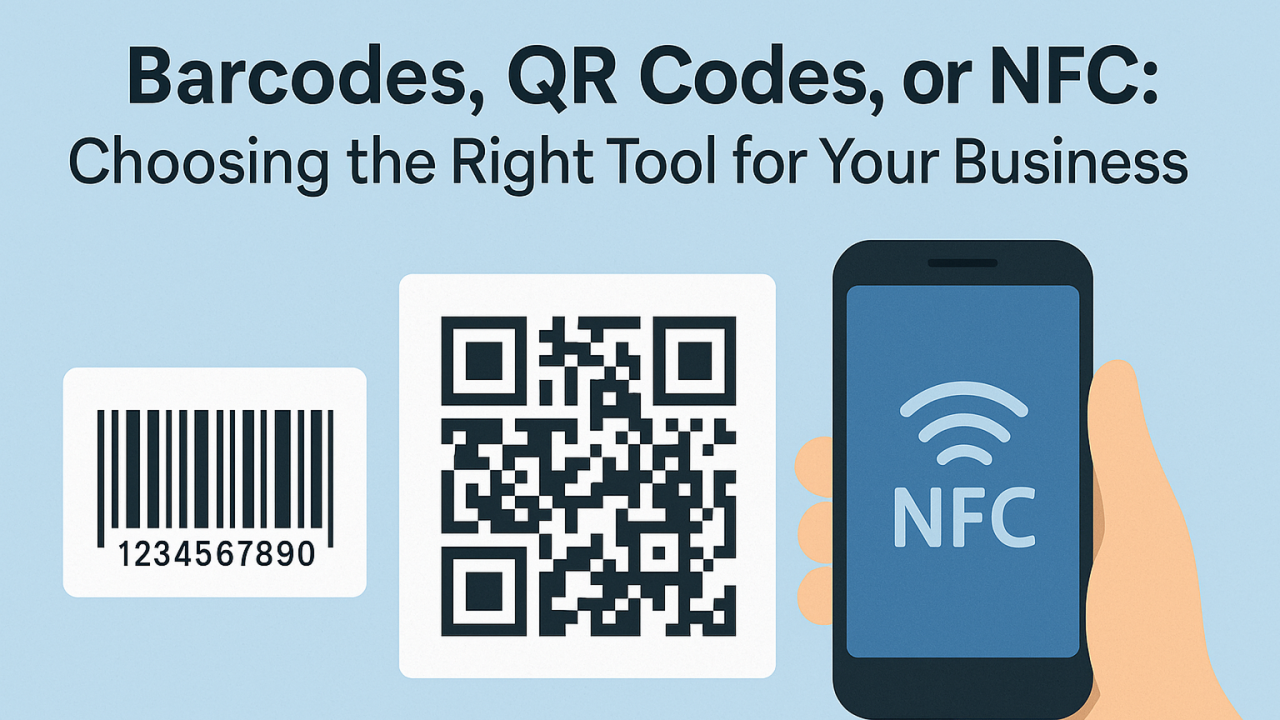When automating workflows in Yeeflow, you often need to present sublist data — such as purchase items, deal details, or task breakdowns — inside an email.
Instead of showing plain text or unformatted values, you can use Loop Action to automatically convert sublist records into a clean, structured HTML table.
With just one Loop and three Set Variable actions, Yeeflow can process any list, build a dynamic table, and include it seamlessly in your workflow email.
No manual formatting. No code. Just smart automation.
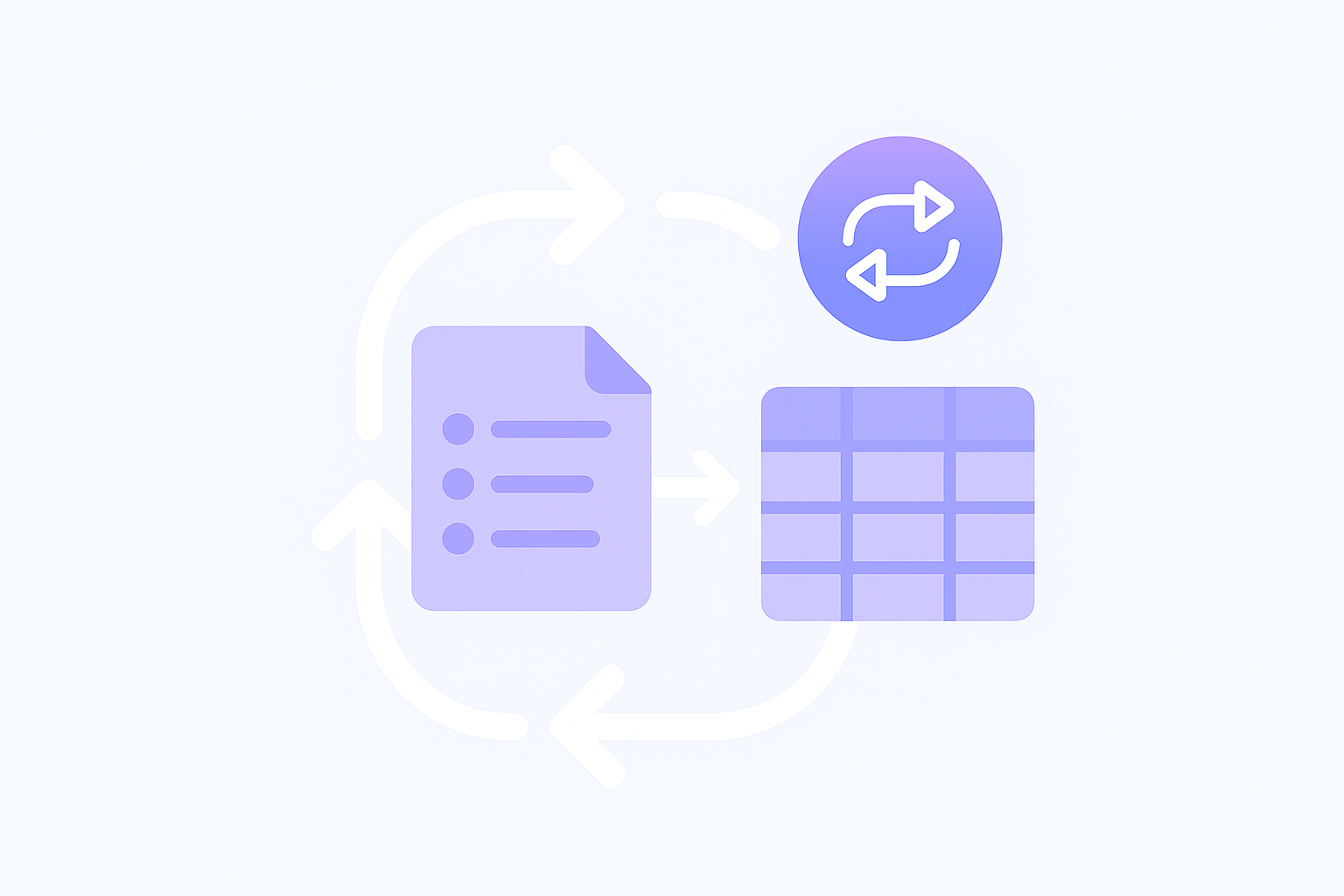
🧩 The Challenge
In many workflow scenarios, the system collects multiple records — for example, deal lines, purchase items, or subform entries.
However, when you try to include those lists in a notification or approval email, the result often looks messy and hard to read.
That’s exactly the challenge I faced when building a Weekly Top Deals Report — I needed to display multiple deal records neatly within one email, with consistent styling and easy-to-read columns.
💡 The Solution: Loop + 3 Set Variables
To solve this, I used Loop through list items to process each record and build a table step by step through three Set Variable actions.
Here’s what the workflow looked like 👇
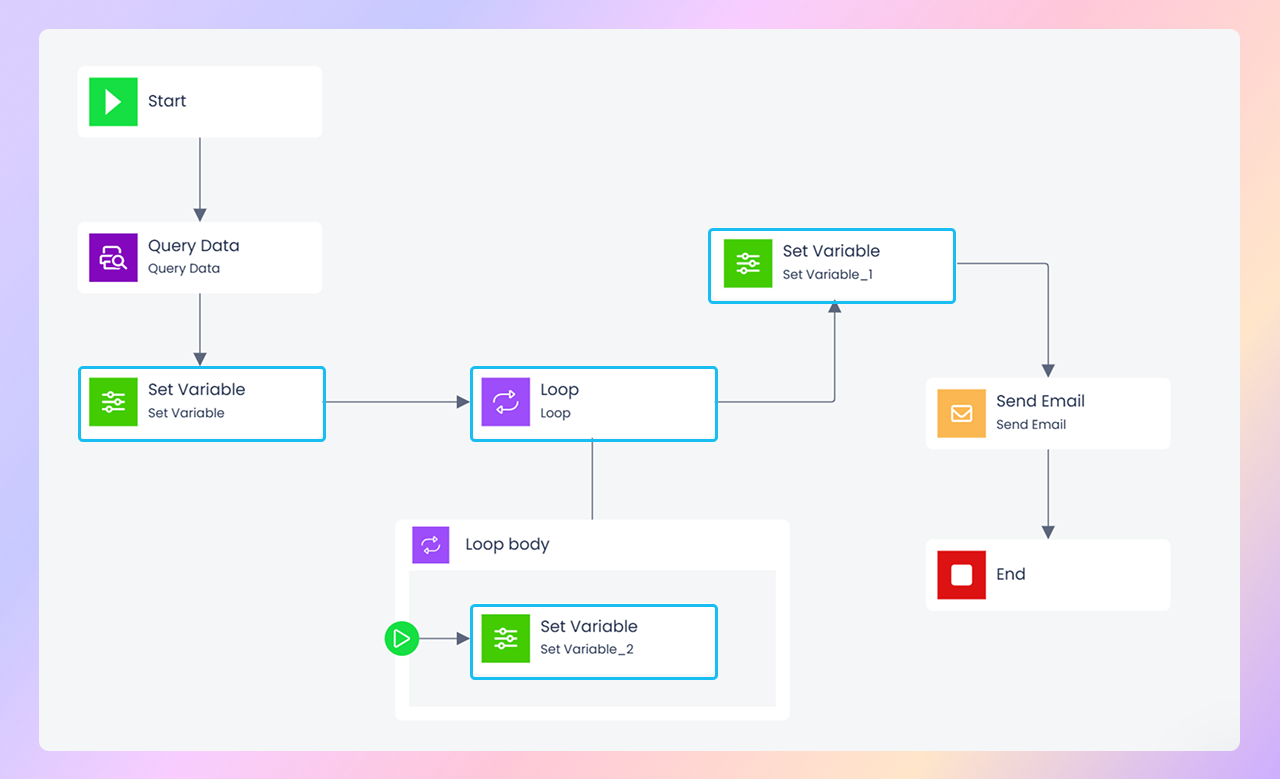
Step 1: Start the Table (Header)
The first Set Variable defines the table structure and header, including columns such as Deal Name, Amount, and Description.
This establishes the layout and basic styling before any data is added.
Step 2: Build the Table Rows with the Loop
The Loop Action is then set to Loop through list items — using the list returned by a Query Data action.
Inside the loop, the second Set Variable appends each item’s details as a new row in the table.
During each iteration, the loop reads the current record’s fields (like Deal Name, Amount, Description) and adds them into the growing table automatically.
Step 3: Close and Finalize the Table
After all records are processed, the third Set Variable completes the table by adding closing tags and saving the result to a variable.
This variable can then be inserted directly into the Send Email action to display the table in the message body.
StepVariableFunction1️⃣Header VariableDefines table header and layout2️⃣Loop VariableAdds each sublist item as a row3️⃣Footer VariableCloses the table and finalizes it for output
📊 Example: Automated Weekly Top Deals Report
By combining these steps, the workflow can automatically query deals, process them through the Loop, and generate a weekly summary email like this:
Every week, Yeeflow builds the table dynamically — updating deal information, recalculating totals, and sending the report automatically to stakeholders.
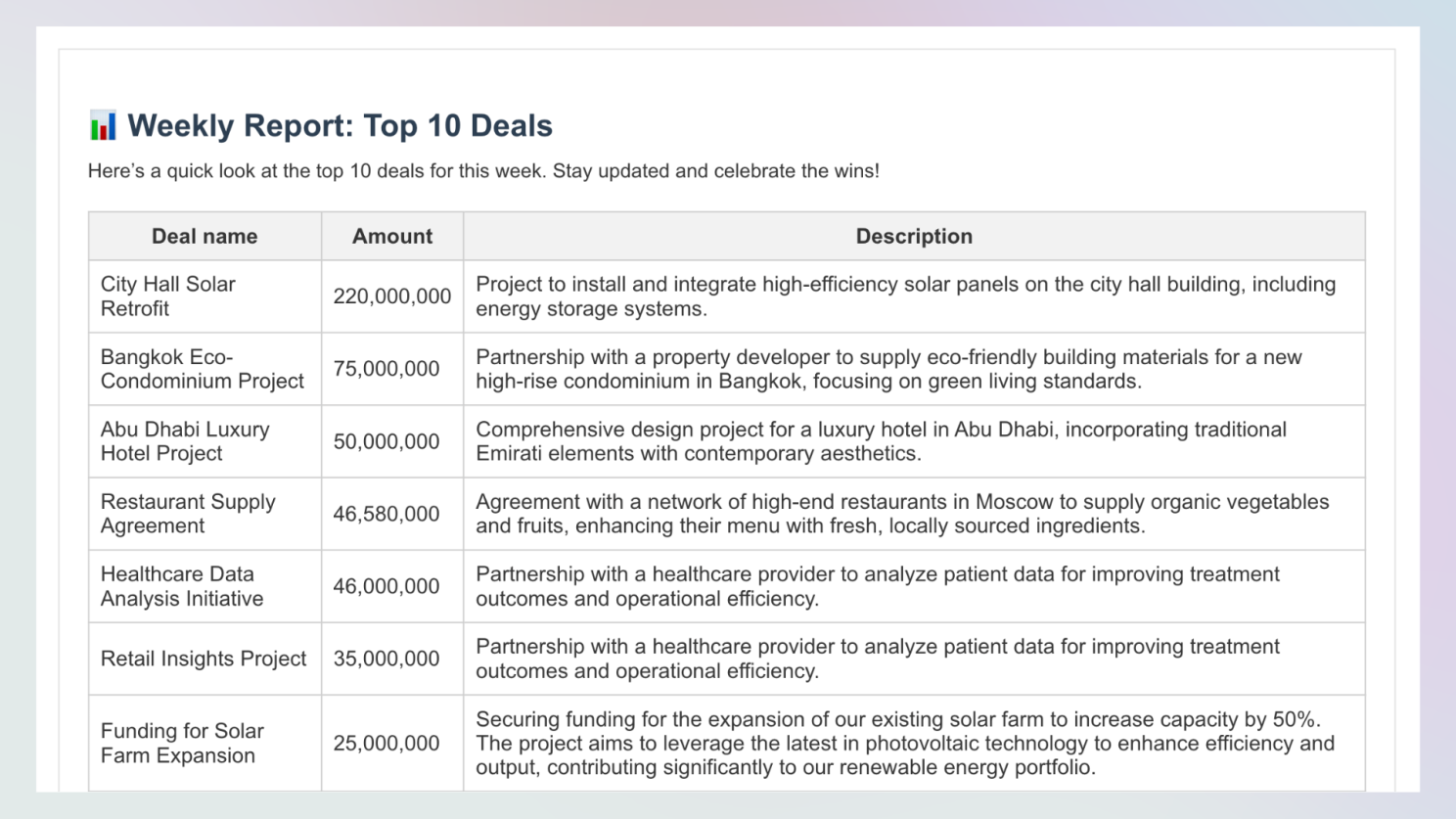
🧾 More Use Cases Beyond Reports
The same Loop pattern works for many real-world business needs — not just reports.
Here are three common examples where Loop turns sublist data into clear, structured emails:
1️⃣ Purchase Request Details
Automatically list purchase items in approval emails, including name, quantity, price, and subtotal — ensuring managers can review all line items in one glance.
2️⃣ Approval Summary Table
Include all approvers’ decisions (e.g., name, status, time, comments) in a final summary email.
The loop processes each approval record and builds a consolidated table for easy tracking.
3️⃣ Project Task List
Display task progress from a project’s subform in status update emails.
Each task line (owner, due date, completion rate) becomes a row in the table, giving stakeholders instant visibility.
🏁 Takeaways
- Loop through list items simplifies processing of sublist or queried data.
- Use three Set Variables to build, populate, and finalize a table step by step.
- Ideal for weekly reports, purchase details, approval summaries, or project updates.
- Once configured, Yeeflow automatically handles data changes and formatting every time.
By leveraging Loop this way, you can turn structured data into polished, actionable email content — making your workflows more intelligent, consistent, and communication-ready.

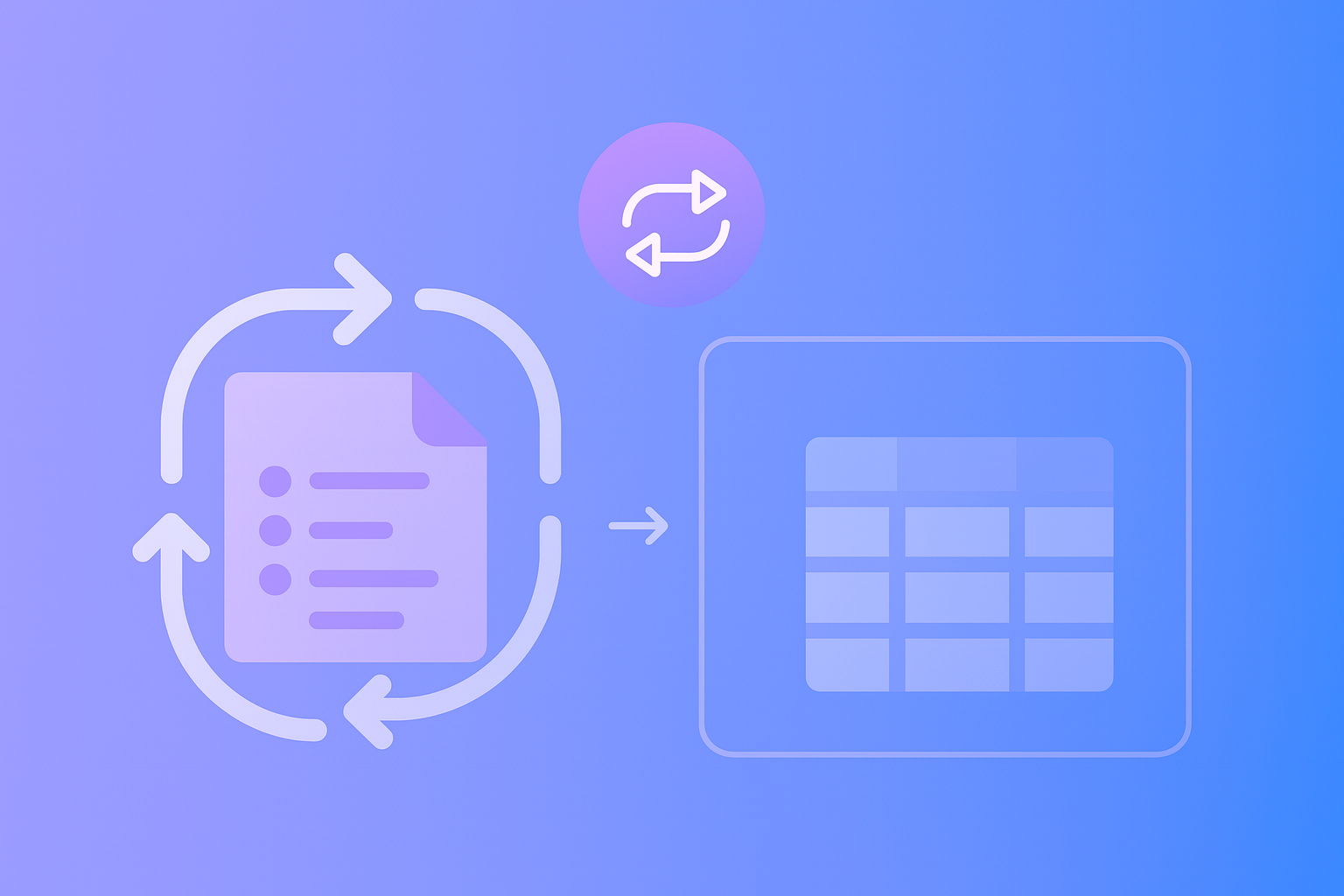



.png)
